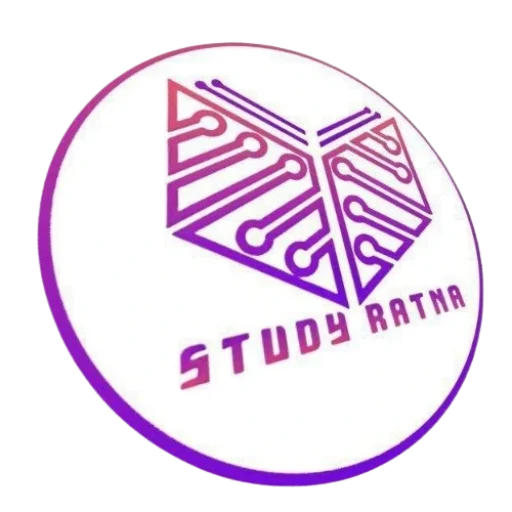CBSE Class 11 Economics Syllabus PDF for 2024-25: This is the most up-to-date and updated CBSE 11th Curriculum for Economics 2024-25. The syllabus includes course structure, course content, question paper design, and items that were taken off the list. You can get the outline as a PDF for free.
CBSE Economics Sylabus for Class 11 in 2024–25: An important thing that everyone should know is how to understand economic ideas. It is a branch of social science that has a big effect on people. With the way the market and economic life are changing, it’s important to know the basics of it. This is why CBSE gives Class 11 kids Economics (Code-030). This class is open to students in the commerce stream who want to learn more about finance and accounting.
You can get the most up-to-date CBSE 11th Economics syllabus for the 2024–25 school year here in PDF file. This piece will also talk about the course structure, the course material, and other important parts of the syllabus.
CBSE Class 11 Economics Course Structure 2024-25
There are two parts to the CBSE 11th Economics curriculum: study and project. The project will be graded for 20 points, and the theory part will be worth 80 points. This means that each student will get a score out of 100 on their final report card. There are three hours set aside for the theory test. Check out the full course outline below:
| Units | Marks | Periods | |
| Part A | Statistics for Economics | ||
| Introduction | 15 | 10 | |
| Collection, Organisation and Presentation of Data | 30 | ||
| Statistical Tools and Interpretation | 25 | 50 | |
| 40 | |||
| Part B | Introductory Microeconomics | ||
| Introduction | 04 | 10 | |
| Consumer’s Equilibrium and Demand | 14 | 40 | |
| Producer Behaviour and Supply | 14 | 35 | |
| Forms of Market and Price Determination under perfect competition with simple applications | 08 | 25 | |
| 40 | |||
| 200 | |||
| Part C | Project Work | 20 | 20 |
CBSE Class 11 Economics Syllabus 2024-25
There are two parts to the CBSE 11th Economics course. An important part of economics is numbers, and Part B is all about small-scale economics. Part C is the next part, and it has the project rules and information. To fully understand the CBSE Class 11 Economics Syllabus 2024–25, you can look at the table below, which breaks down the syllabus by unit.
| Part A: Statistics for Economics |
| In this course, the learners are expected to acquire skills in collection, organisation and presentation of quantitative and qualitative information pertaining to various simple economic aspects systematically. It also intends to provide some basic statistical tools to analyse, and interpret any economic information and draw appropriate inferences. In this process, the learners are also expected to understand the behaviour of various economic data. |
| Unit 1: Introduction (10 Periods) |
| What is Economics?Meaning, scope, functions and importance of statistics in Economics |
| Unit 2: Collection, Organisation and Presentation of data (30 Periods) |
| Collection of data – sources of data – primary and secondary; how basic data is collected with concepts of Sampling; methods of collecting data; some important sources of secondary data: Census of India and National Sample Survey Organisation.Organisation of Data: Meaning and types of variables; Frequency Distribution.Presentation of Data: Tabular Presentation and Diagrammatic Presentation of Data:(i) Geometric forms (bar diagrams and pie diagrams), (ii) Frequency diagrams (histogram, polygon and Ogive) and (iii) Arithmetic line graphs (time series graph). |
| Unit 3: Statistical Tools and Interpretation (50 Periods) |
| For all the numerical problems and solutions, the appropriate economic interpretation may be attempted. This means, the students need to solve the problems and provide interpretation for the results derived.Measures of Central Tendency- Arithmetic mean, Median and ModeCorrelation – meaning and properties, scatter diagram; measures of correlation – Karl Pearson’s method (two variables ungrouped data) Spearman’s rank correlation (Non-Repeated Ranks and Repeated Ranks).Introduction to Index Numbers – meaning, types – Wholesale Price Index, Consumer Price Index and index of industrial production, uses of index numbers; Inflation and Index Numbers, Simple Aggregative Method. |
| Part B: Introductory Microeconomics |
| Unit 4: Introduction (10 Periods) |
| Meaning of microeconomics and macroeconomics; positive and normative economicsWhat is an economy? Central problems of an economy: what, how and for whom to produce; concepts of Production Possibility Frontier and Opportunity Cost. |
| Unit 5: Consumer’s Equilibrium and Demand (40 Periods) |
| Consumer’s equilibrium – meaning of Utility, Marginal Utility, Law of Diminishing Marginal Utility, conditions of consumer’s equilibrium using marginal utility analysis.Indifference curve analysis of consumer’s equilibrium-the consumer’s budget (budget set and budget line), preferences of the consumer (indifference curve, indifference map) and conditions of consumer’s equilibrium.Demand, market demand, determinants of demand, demand schedule, demand curve and its slope, movement along and shifts in the demand curve; price elasticity of demand – factors affecting price elasticity of demand; measurement of price elasticity of demand – percentage-change method and total expenditure method. |
| Unit 6: Producer Behaviour and Supply (35 Periods) |
| Meaning of Production Function – Short-Run and Long-Run Total Product, Average Product and Marginal Product.Returns to a FactorCost – Short run costs – Total Cost, Total Fixed Cost, Total Variable Cost; Average Cost; Average Fixed Cost, Average Variable Cost and Marginal Cost – meaning and their relationships.Revenue – Total Revenue, Average Revenue and Marginal Revenue – meaning and their relationship.Producer’s Equilibrium – meaning and its conditions in terms of Marginal Revenue- Marginal Cost.Supply, market supply, determinants of supply, supply schedule, supply curve and its slope, movements along and shifts in supply curve, price elasticity of supply; measurement of price elasticity of supply – percentage-change method. |
| Unit 7: Perfect Competition – Price Determination and simple applications. (25 Periods) |
| Perfect competition – Features; Determination of market equilibrium and effects of shifts in demand and supply. (Short Run Only)Simple Applications of Demand and Supply: Price ceiling, Price floor. |
| Part C: Project in Economics (20 Periods) |
| Guidelines as given in the Class XII curriculum |
CBSE Class 11 Economics Question Paper Design 2024-25
| SN | Typology of Questions | Marks | Percentage |
| 1 | Remembering and Understanding:Exhibit memory of previously learned material by recalling facts, terms, basic concepts, and answers.Demonstrate understanding of facts and ideas by organizing, comparing, translating, interpreting, giving descriptions, and stating main ideas | 44 | 55% |
| 2 | Applying: Solve problems to new situations by applyingacquired knowledge, facts, techniques and rules in a different way. | 18 | 22.5% |
| 3 | Analysing, Evaluating and Creating:Examine and break information into parts by identifying motives or causes. Make inferences and find evidence to support generalizations.Present and defend opinions by making judgments about information, validity of ideas, or quality of work based on a set of criteria.Compile information together in a different way by combining elements in a new pattern or proposing alternative solutions. | 18 | 22.5% |
| Total | 80 | 100% |
CBSE Class 11 Economics Deleted Syllabus
Some topics that were in the old CBSE 11th Economics course have been taken out. The topics or material that were taken out won’t be on the test in 2025, so they shouldn’t be on the current syllabus. See the table below to find out what areas are no longer taught in 11th-grade Economics.
| Unit | Unit Name | Deleted Topics | Added |
| Part A: Statistics for Economics | |||
| 1 | Introduction | No Change | – |
| 2 | Collection, Organisation and Presentation of Data | Sampling and Non-Sampling errors | – |
| 3 | Statistical Tools and Interpretation | Weighted meanMeasures of DispersionSimple aggregative method | Non-Repeated Ranks and Repeated Ranks |
| Part B: Introductory Microeconomics | |||
| 4 | Introduction | No Change | – |
| 5 | Consumer’s Equilibrium and Demand | Total expenditure method | – |
| 6 | Producer Behaviour and Supply | No change | – |
| 7 | Forms of Market and Price Determination under perfect competition with simple applications | Other Market Forms – monopoly, monopolistic competition, oligopoly – their meaning and features | – |



![100% Working PW MOD APK & Study Rays APK Download – [v1.5] Latest Version](https://studyratna.co/wp-content/uploads/2025/05/maxresdefault-1.jpg)




